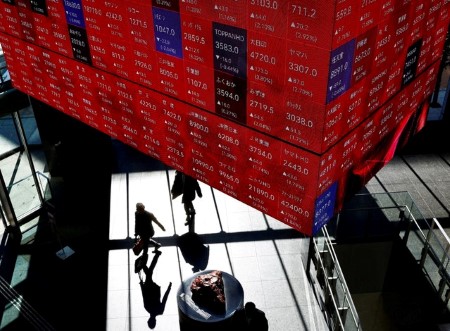




Inflation Update: Green light for easing
 DOWNLOAD
DOWNLOAD

December Economic Update: One for them, one for us
 DOWNLOAD
DOWNLOAD

Philippines Trade Update: Trade trajectories trend along
 DOWNLOAD
DOWNLOAD


Stocks not out of the woods after trying to recover

US stock markets tried to steady from their epic one-day shakeout before giving it up late in the day, amid jitters about AI earnings potential that deflated megacaps, and, thus, the whole market on Wednesday.
The S&P 500 and Nasdaq rallied during the session, but closed down 0.5% and 0.9% respectively. The Dow Jones Industrial Average hung on to close 0.2% higher and small-cap stocks also rose as investors sought out value away from the megacaps.
Tesla was the only one of the so-called Magnificent 7 stocks to climb out of its hole, ending 1.7% higher after losing more than 12% Wednesday. Alphabet, Apple, Amazon, Meta, and Microsoft all fell, with earnings reports looming next week, as did AI leader Nvidia, which reports later in August.
Some relief came from GDP data showing the US economy grew surprisingly fast in the second quarter, with less inflation, giving the Fed scope to ease this year with little fear of overheating.
Still, investors want to see what Friday’s June Personal Consumption Expenditure Price Index shows as the Fed’s favorite inflation reading, days before the Federal Open Market Committee meeting next week. There seems little chance of a US cut this month, but markets are confident that a pivot away from restrictive monetary policy will come in September.
The question: Is the selloff a bull market pullback or a bearish turning point? Given the recent string of record highs, indexes looked priced for perfection, which was not realized in the results from Alphabet and Tesla that precipitated the steepest percentage drop in the S&P 500 and Nasdaq since late 2022.
Uncertainty is a prominent theme ahead of the US elections after President Joe Biden scrubbed his campaign and handed the baton to Vice President Kamala Harris, who has almost pulled even in early polls with Republican Donald Trump.
Volatility has picked up across markets, according to the CBOE Market Volatility Index, the bond market’s ICE BofA Merrill Lynch MOVE Index, and the currency market’s Deutschebank dollar currency vol index.
It doesn’t help that the Bank of Japan and the Fed hold meetings almost simultaneously next week. China’s economy is slowing faster than economists and Beijing anticipated, with spillover into commodity markets and across Asia.
The Japanese yen rallied for a fourth straight session against the dollar on Thursday, hitting a 2-1/2-month high, as investors unwound their long-running bets against the currency ahead of those meetings. The dollar/yen was at 153.845 in late trade, just about flat.
Chinese stocks fell, iron ore and oil prices were shaky after the country’s central bank sprang a surprise cut in longer-term interest rates, only stoking further worries about the world’s second-largest economy and Asian markets overall.
The Shanghai Composite index closed at the lowest level since Feb. 19. MSCI’s broadest index of Asia-Pacific shares outside Japan closed 1.00% lower, while Japan’s Nikkei is coming off a 3.28% tumble.
“In China it’s not really a function of the cost of capital, it’s a function of demand (for) capital which is causing economic weakness over there, which is why you had a really tepid response from Chinese equities,” said Jeff Schulze, Head of economic and market strategy ClearBridge Investments.
Here are key developments that could provide more direction to markets on Tuesday:
– Japan Tokyo CPI (July)
– Singapore Manufacturing output (June)
– US Personal Consumption Expenditures Price Index (June)
This article originally appeared on reuters.com





 By Reuters
By Reuters